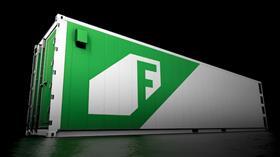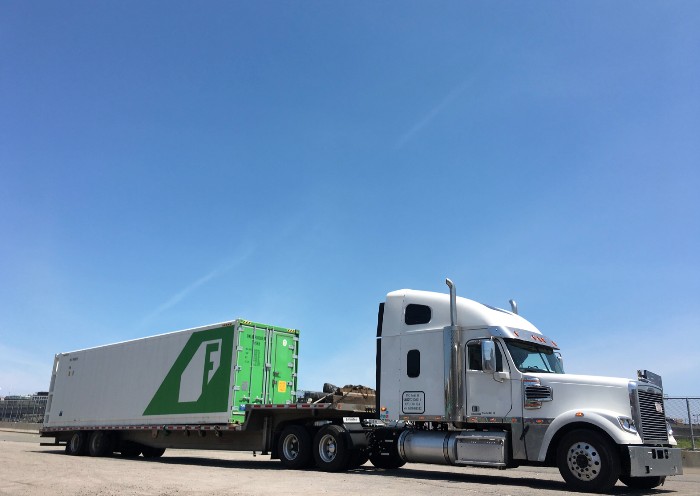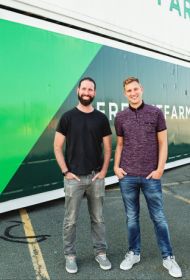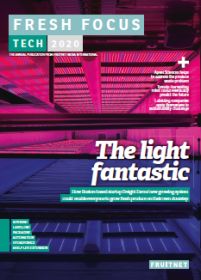
A growing phenomenon that is reshaping fresh produce supply chains. Shipping containers, the vectors of globalisation that were forged in the first instance to ferry goods thousands of miles around the earth, are now being used to grow fresh produce that will be consumed in their immediate vicinity. What’s more, having made international markets more accessible to all, the containers now house technology so advanced that even someone with the most basic, rudimentary knowledge of horticulture can control and oversee the cultivation within.
Excitement about the potential of urban farming continues to build, with the idea of producing closer to market – using fewer resources and arguably boosting quality in the process – attracting plenty of interest, not to mention investment. Earlier this year, Italian start-up Planet Farms unveiled a plan to build Europe’s largest and most advanced vertical farm by spring 2020 in Cavenago, halfway between Milan and Bergamo. The farm will eventually extend across 9,000m2 and supply 40,000 packs of residue-free produce per day.
It’s a trend that is by no means confined to Europe or North America. In Shanghai, a group called Orisis is working with joint venture Infinite Acres – comprising British online retailer Ocado, Dutch horticultural tech specialist Priva and US plant science firm 80 Acres Farms – to build what it says will be the city’s first indoor vertical farm, producing lettuce and other leafy greens.

However, it’s the arrival of closed-loop, container-based systems, which theoretically allow anyone to become a grower, that could really revolutionise this area of the fresh produce business. In June 2019, furniture retail giant Ikea revealed it was preparing to harvest its first hydroponically grown lettuces and serve them to customers at two of its in-store restaurants in Helsingborg and Malmö. The vegetables are grown under led lights inside specially retrofitted shipping containers using a so-called circular farming system developed by partner company Bonbio. Days later, Swedish supermarket chain ICA announced a similar venture at its Maxi Högskolan store in Halmstad, between Gothenburg and Helsingborg, using a container system called Greenery configured by Boston-based vertical farming start-up Freight Farms.
In this exclusive interview, Fruitnet speaks to Freight Farms co-founder Brad McNamara about the company’s recent dramatic growth, about the trends he says are driving that expansion and about a future that might eventually see fresh produce cultivation become something that practically anyone with access to a laptop or smartphone can manage and control.
Brad, can you tell us what inspired you and co-founder Jon Friedman to create Freight Farms?
Brad McNamara: We were originally looking at how we could bring food production closer to the urban centre. We were looking at greenhouses, but really it came down to a better way to create accessibility and transparency in the food system. So for us, the idea was to move away from the constraints of a rooftop greenhouse to a more user-friendly model that allows a wider population to grow locally in a particular place. That’s really where it all came from.

Were you involved in horticulture in any way prior to that?
BM: Not specifically, although I had been growing on my own for some time. I got an undergrad degree from Northeastern University in Boston, then an MBA in sustainability and environmental science. Jon’s background was industrial design, so the two kind of married well. The big thing for us was, when we first started the market potential for local, transparent, sustainable, chemical-free was just at the beginning. Everybody was talking about it, but no-one had a solution for how to produce in those ways while increasing the quality and consistency of the supply chain.
The business you created, was it a fairly large operation from the start?
BM: No, at the start it was Jon and I plus a small team, very much your classic startup, starting in a simple parking lot. We knew we needed to build the technology from the ground up with the market and the farmer in mind, and we knew it had the potential to empower anyone to grow food anywhere. We built our first prototypes in 2012 and went into commercial manufacturing in 2014.
To whom did you show this original proof of concept?
BM: Well, anyone that would look in the early days! What we did was grow a wide variety of crops to test the stability and the flexibility of the system, as well as some of the concepts within it. I was constantly bringing people from the produce industry by, so we made a lot of connections with cold supply chain, produce distributors, regional specialists, as well as some of the markets around us. We talked to a lot of the wholesalers and asked them, ‘Is this product ready? or ‘Is this crop specifically what you would look for, or maybe something different?’ That was really the guiding light, to know what the market would accept. The feedback was phenomenal. Much of the time they would say ‘this is fresher, brighter, crisper than anything I’m getting now’ and they got very excited about that.

Were there any areas in which you needed to improve?
BM: Well, once we got the plants in their mouths, there weren’t really any doubts left. You know when you eat something and it’s really good? I think in the early days it was more about general education in the market, in terms of growing crops indoors, hydroponics and all of the more technical pieces which by now have been more established. On the institutional side, the concept of needing to supply more locally grown food was not something we had to explain. They were getting hammered by their customers to provide higher quality, locally sourced, clean, healthy and consistent produce.

Around 2012, there was a lot of talk about vertical farming as a concept that might eventually see production centres constructed as entire buildings in cities. Were you aware of this trend bubbling away?
BM: We were right there at the early stage of vertical farming, so we had the benefit of building systems while seeing those conceptual drawings of space-age technology. That was great, because it was almost like watching a sci-fi movie while you’re doing it in real life. Some of those concepts did apply but we had that functional knowledge we needed to satisfy.
Many people at the time said it was science fiction, but we kept very quiet about the fact that we were already accomplishing it with our unit. That made us feel like we were on to something. We were early enough that we were growing, we had customers and we had market insight. Technology for technology’s sake wasn’t going to serve our customers appropriately.
With any transition to a new technology, there can be resistance from certain quarters. Did you encounter any concerns about bringing traditional horticulture into an urban, indoor environment?
BM: What people want to understand is about traceability – where exactly did it come from, who grew it, how was it grown. That’s been the driving question in the conversation, and less about whether it’s grown in soil or not. Indoor-grown, whether in a greenhouse, warehouse or decentralised module is pretty much mainstream at this point.
The full interview with Brad McNamara of Freight Farms is published in Fruitnet's annual fresh produce technology supplement Fresh Focus Tech. To order your copy, contact subscriptions@fruitnet.com or +44 20 7501 0311.
Click here to read part two of this interview.




